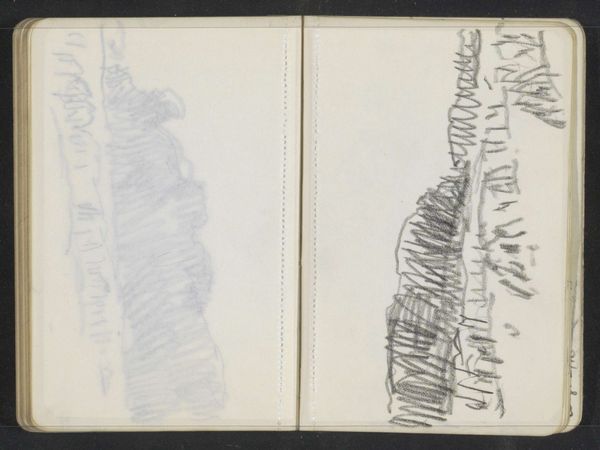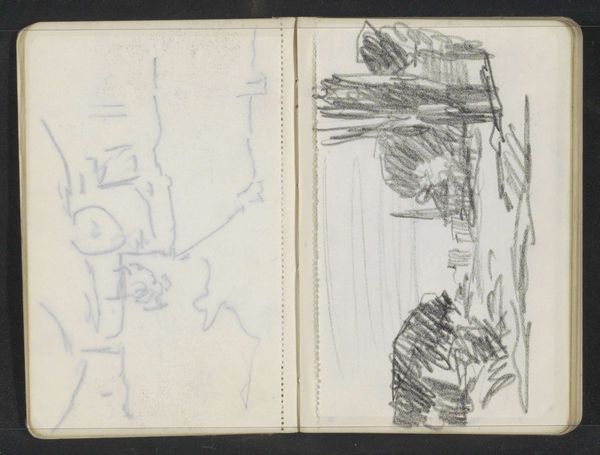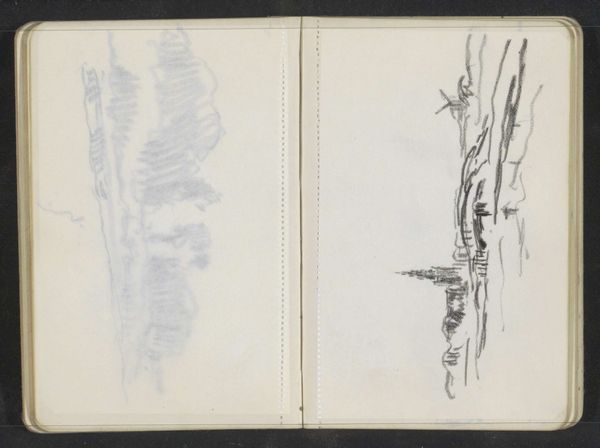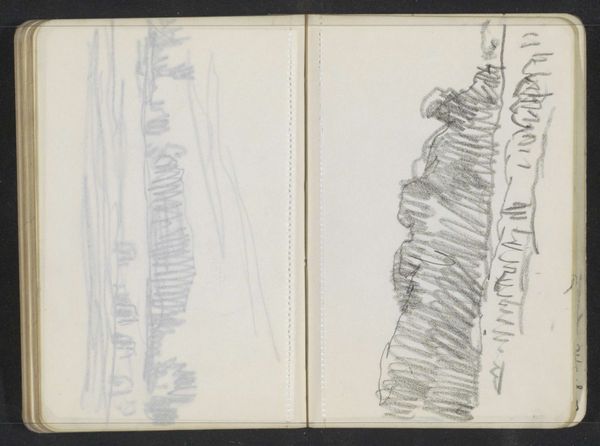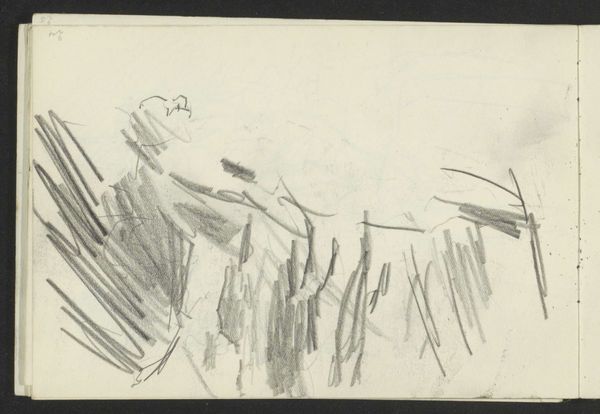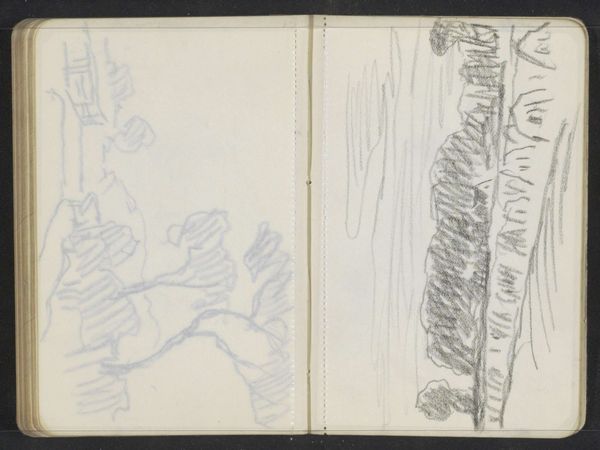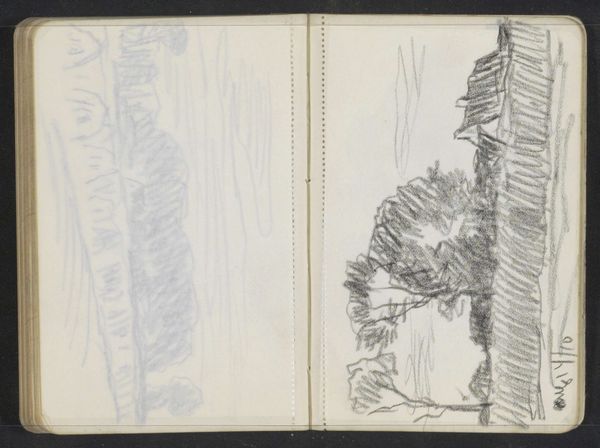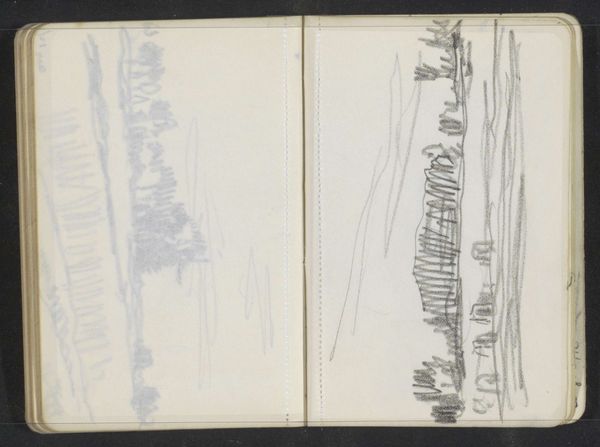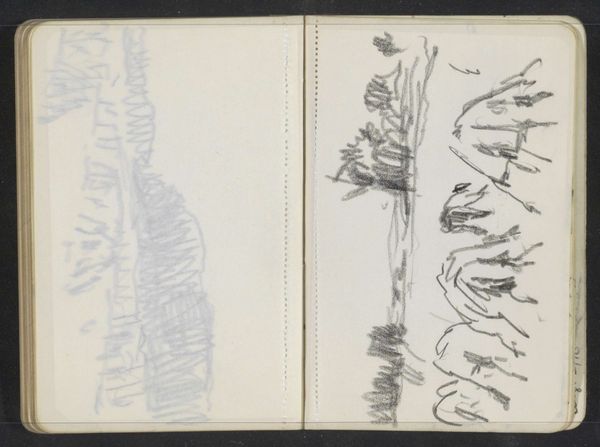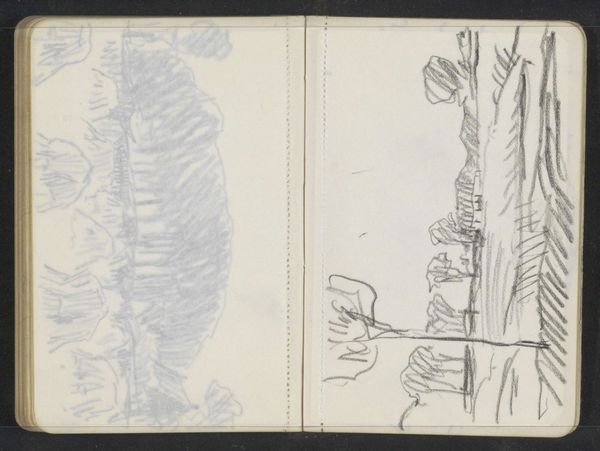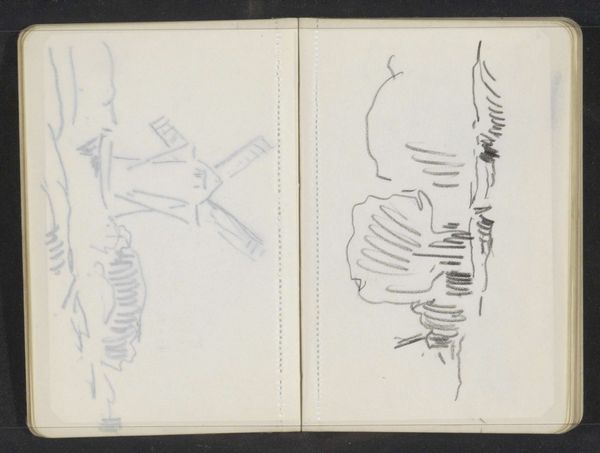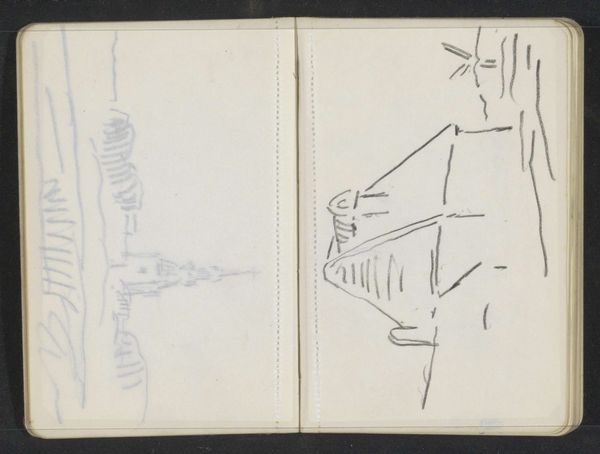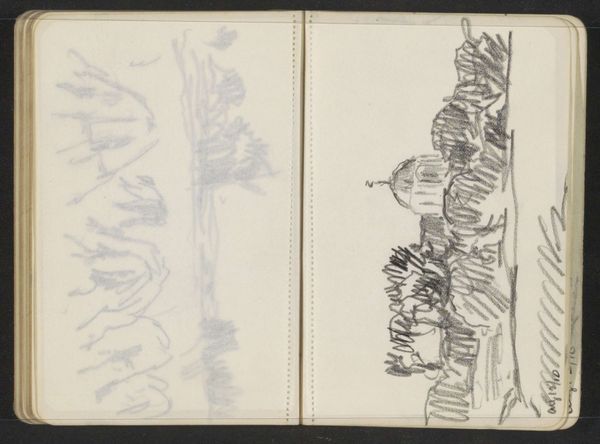
drawing, paper, graphite
#
drawing
#
landscape
#
paper
#
abstraction
#
graphite
#
modernism
Copyright: Rijks Museum: Open Domain
Curator: Let’s dive in. What stands out to you initially about this work? Editor: This is Alexander Shilling’s “Landschap met bomen en een molen,” created sometime between 1910 and 1918, using graphite on paper. It’s… interesting. The windmill feels incomplete, almost like a ghostly echo compared to the more defined landscape. What do you see in this piece? Curator: For me, this drawing acts as a lens through which we can examine the shifts in early 20th-century artistic and political thought. Notice how the landscape, despite its seeming tranquility, is rendered with a hesitant, almost fragmented hand. What societal tensions do you think might be bubbling beneath the surface of this landscape? Editor: I hadn’t considered it like that! Maybe the uncertainty reflects the pre-war atmosphere? The incompleteness hinting at the instability of the time? Curator: Exactly! Think about the role of the artist in a period of rapid industrialization and social upheaval. Shilling’s choice to depict a traditional subject like a landscape, but with such visible anxiety in the mark-making, suggests a critical engagement with the changing world. Editor: So the drawing is less about the landscape itself, and more about Shilling's reaction to the changes happening around him? Curator: Precisely. It makes us think about whose landscapes get represented and how. And furthermore, what does it mean to represent them during such pivotal times? How do artistic choices intersect with broader political narratives? Editor: That gives me a lot to think about. It's not just a pretty landscape; it's a document of a specific moment and mindset. I'll never look at a landscape the same way again. Curator: Excellent! That’s the point, to encourage deeper conversations with our history and the art that reflects and shapes it.
Comments
No comments
Be the first to comment and join the conversation on the ultimate creative platform.
